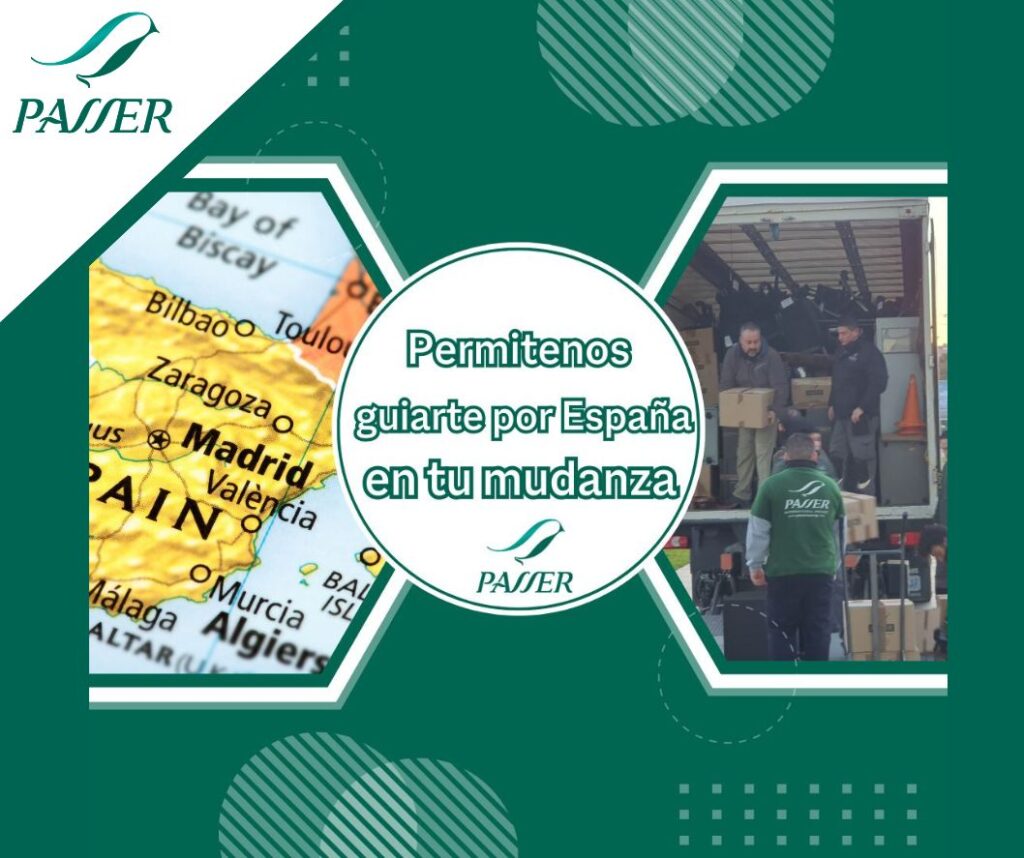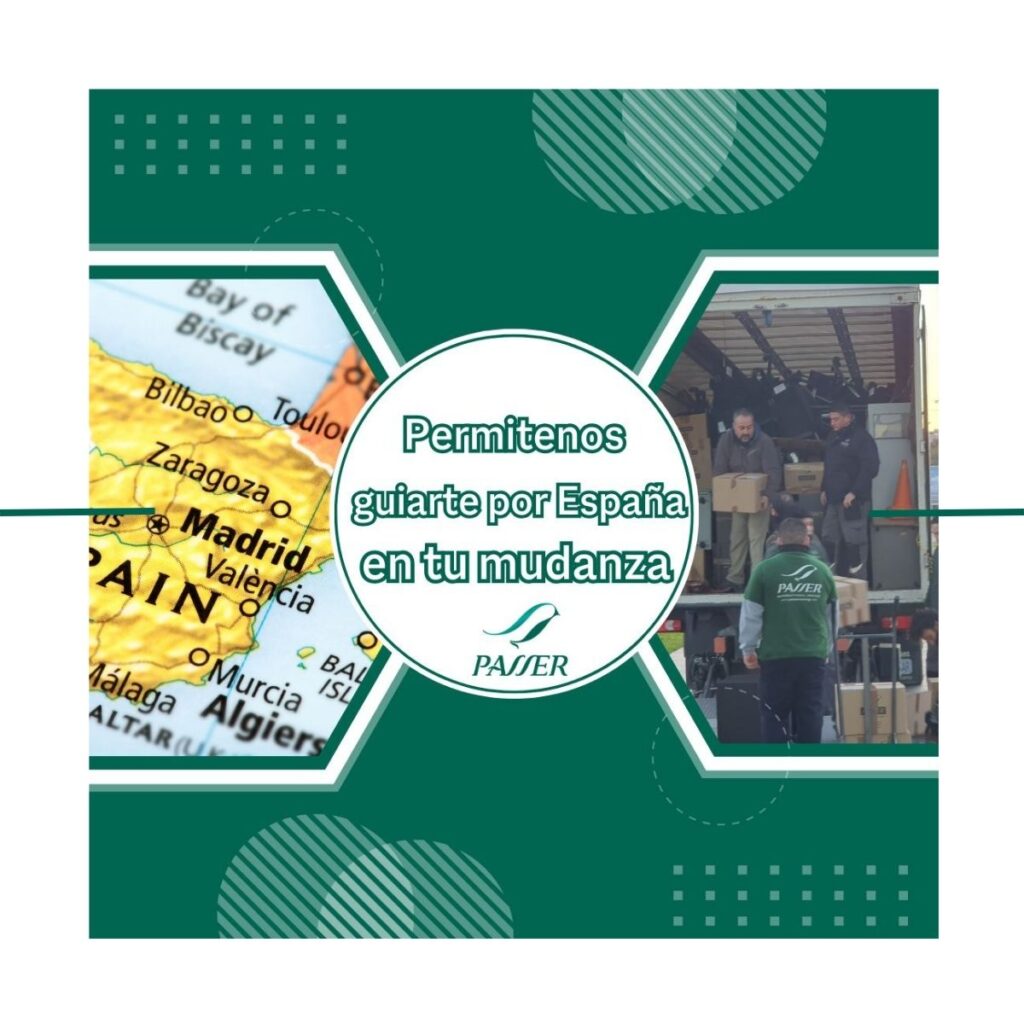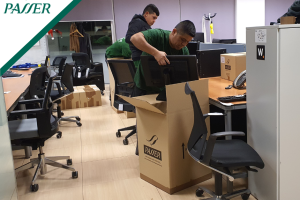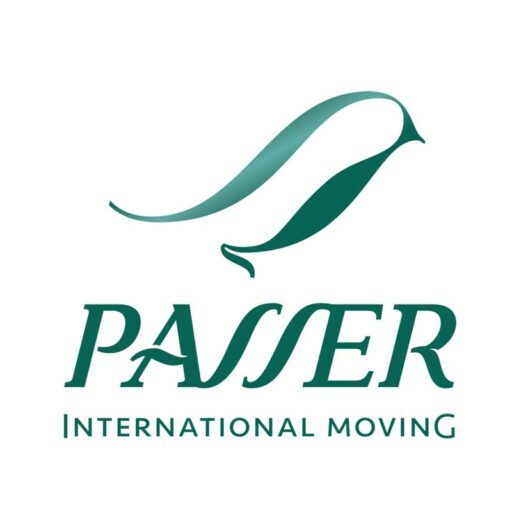Are you planning a move in Spain and don't know where to start? Choosing the best route for your move in Spain can make the difference between an efficient move and one filled with setbacks. How do you decide on the safest, fastest, and most economical route to transport your belongings? In this article, we offer a practical guide to planning the ideal route, optimizing time, and reducing costs. You'll also discover how Passer Moving can help you make your move stress-free and perfectly organized.
Why It Is Important to Choose the Best Route
Choosing the right route not only ensures your belongings arrive on time and in good condition, but also helps you avoid common problems like delays, unexpected expenses, and transportation setbacks.
Advantages of planning your route well:
- Time saving: A well-selected route reduces the duration of the transfer.
- Lower costsAvoiding unnecessary tolls and long journeys can reduce overall spending.
- Greater security: Appropriate routes minimize risks associated with the transportation of goods.
Factors to Consider When Choosing a Moving Route in Spain
1. Distance and Duration of the Trip
The first consideration is the distance between your current location and your new home. This will allow you to estimate the travel time and plan your moving day.
- Use digital tools: Google Maps and GPS can help you calculate the distance and estimated time.
- Consider necessary stopsIf the trip is long, plan rest stops, especially if you are carrying delicate items.
2. Types of Roads and Tolls
Spain has different types of roads: toll motorways, free expressways, and secondary roads. Evaluating which one is most convenient for your move is crucial.
- Toll roads: They offer fast and safe routes, although they involve an additional cost.
- Free highways: They are an economical option, but they can be more crowded.
- Secondary roads: Ideal for short journeys, although they tend to be slower.
3. Size and Type of Vehicle
The size of the vehicle you use for your move will influence the route you choose. Some large vehicles have access restrictions on certain roads or urban areas.
- Height or weight restrictions: Check for low bridges or weight limits on the route.
- Access to urban areasIn cities, some narrow streets or restricted areas may make access difficult.
Tips for Choosing the Best Route for Your Move
1. Conduct a Preliminary Study of the Route
Before moving, analyze possible routes to identify the most efficient one.
- Evaluate options: Consider several alternatives and choose the one that combines the least time and cost.
- Check the traffic: : Consult applications in real time to avoid congested areas.
2. Plan According to the Weather
Weather can significantly impact your trip. Adverse conditions such as rain or snow can lengthen travel time or make driving difficult.
- Check the forecast: Check the weather for moving day and adjust your route if necessary.
- Avoid risksIf the weather is extreme, consider rescheduling your move to ensure safety.
3. Consider Strategic Schedules
The time of day you move affects the smoothness of the journey.
- Avoid rush hourIn big cities, mornings and afternoons tend to have more traffic.
- Take advantage of early hoursMoving early in the morning can be more efficient and less stressful.
How Passer Helps You Choose the Best Route
At Passer, we understand the importance of detailed planning to ensure a successful move. Our team is experienced in route analysis and offers customized solutions for each client.
- Professional advice: We analyze your needs and recommend the most efficient route.
- Time optimizationWe select routes that combine speed and safety, reducing the stress of the transfer.
- Local knowledgeOur experience in moving in Spain allows us to identify the best routes for each region.
Additionally, if you need to store your belongings during the process, we also offer storage services to ensure everything is protected until you arrive at your new home.
Common Mistakes When Choosing a Route and How to Avoid Them
- Failure to investigate local restrictionsSome cities have specific rules for oversized vehicle access. Make sure you know them.
- Ignore rush hour traffic: This can cause delays and increase fuel costs.
- Not planning detours: Always have an alternative route in case of unforeseen events on the main road.
Benefits of Planning Your Route Correctly
Proper planning not only makes the move easier, but also improves your overall moving experience. Some of the key benefits include:
- Stress reduction: Having a clear route will allow you to focus on other aspects of the move.
- Greater efficiency: You will reach your destination in the shortest possible time, avoiding setbacks.
- Economic savingsBy optimizing your journey, you'll reduce unnecessary fuel and toll costs.
Conclusion
Choosing the best route for a move in Spain doesn't have to be complicated if you plan ahead and have the right support. From analyzing road options to predicting traffic and weather, every detail counts to ensure an efficient and safe move. At Passer, we help you organize your move with customized solutions and a professional service tailored to your needs. Contact us and discover how we can make your move a simple and worry-free process!
Do you need to make a move? we can help you
At Passer we are always willing to collaborate









